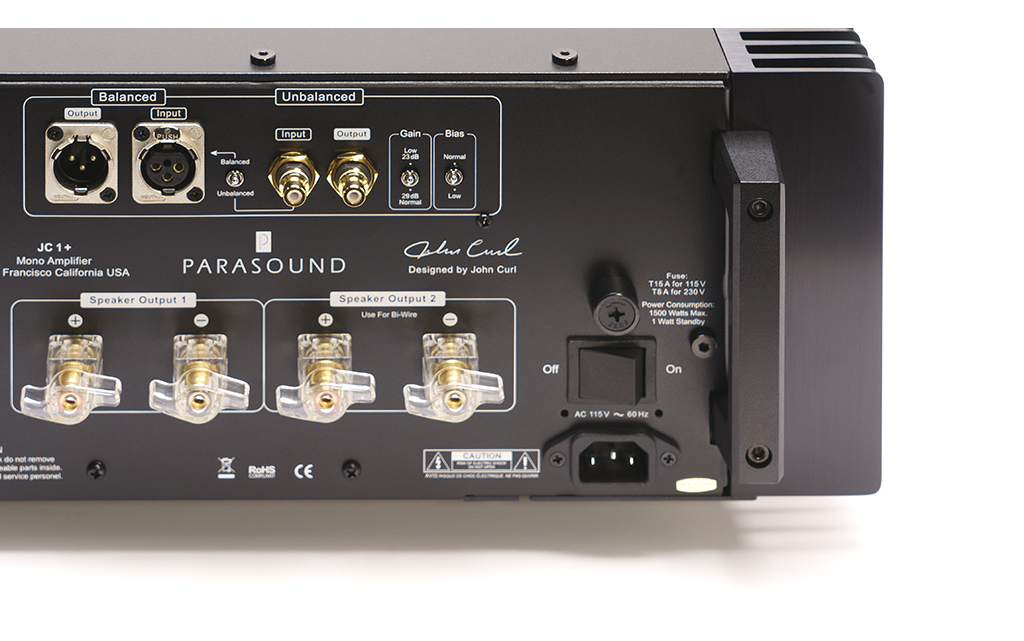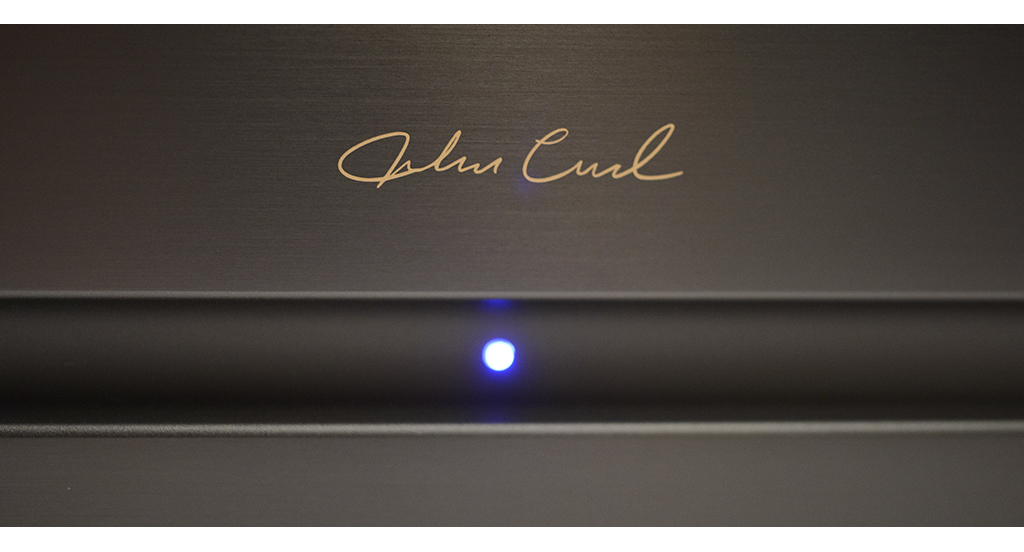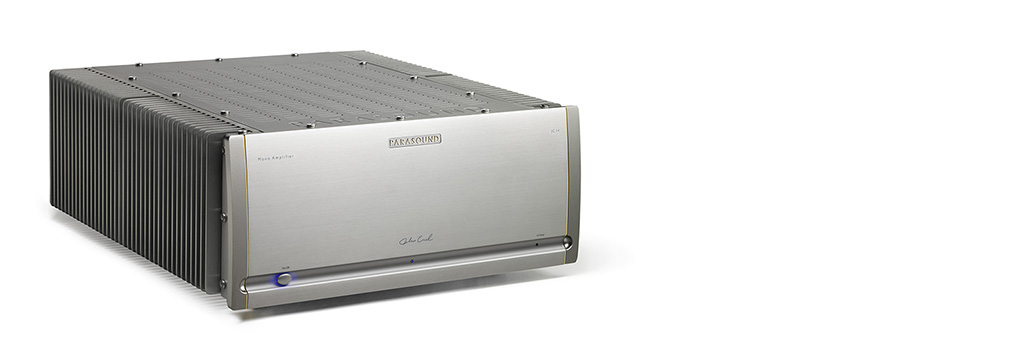The Parasound JC 1+ Monoblocks Real World Reference
By Jeff Dorgay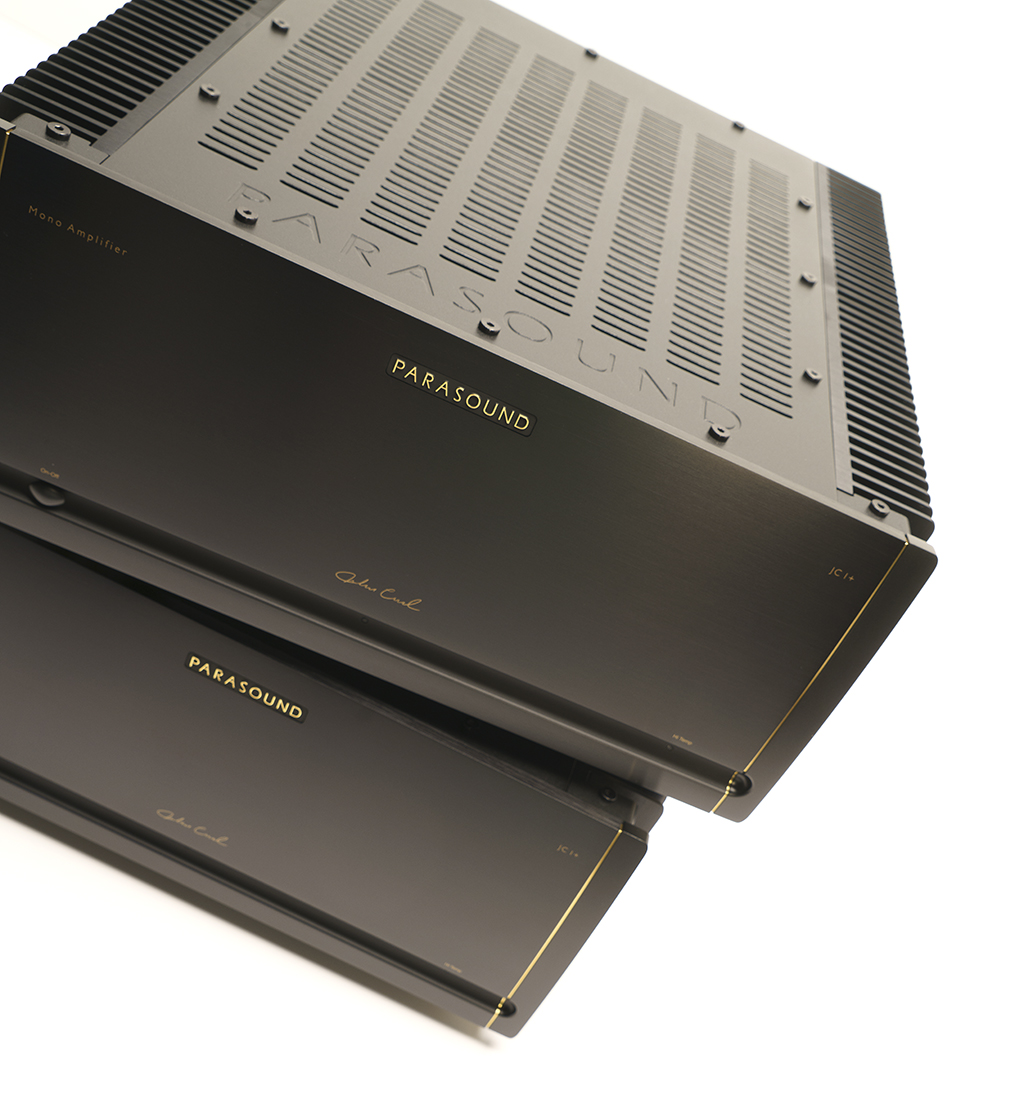 Eyes closed, listening to The Allman Brothers Live at the Fillmore East, at close to concert hall levels for a few minutes (gotta watch the OSHA regs…) if someone whispered in my ear and said, “you’re listening to a six-figure pair of amplifiers,” I would believe them. The JC 1+ monos are that good, that refined, that musical.
Eyes closed, listening to The Allman Brothers Live at the Fillmore East, at close to concert hall levels for a few minutes (gotta watch the OSHA regs…) if someone whispered in my ear and said, “you’re listening to a six-figure pair of amplifiers,” I would believe them. The JC 1+ monos are that good, that refined, that musical.
To those not familiar with the new JC 1+, you might be a little bit freaked out at their current $17,998 a pair price (nearly double that of the old JC 1s), but you shouldn’t be. These amplifiers are worth every penny asked and then some.
To put your fears at ease, my friend and contributor Jerold O’Brien still has his pair of original JC 1s (of course he does), so it was easy to do a side-by-side comparison. Make no mistake, the originals are still fantastic, and if you’re an audiophile on a tighter budget, i.e. an $18k pair of amps isn’t in your immediate future, a used pair of originals will only set you back about $5k.
However, listening to both amplifiers side by side reveals so much improvement in every aspect, the current JC 1+ is every bit as much of a killer deal at $17,998/pair as the originals were at $8,990/pair. Rather than waste a lot of ink here, about all the minute details, click here to go to the Parasound site, where every single change and update over the previous model is listed.
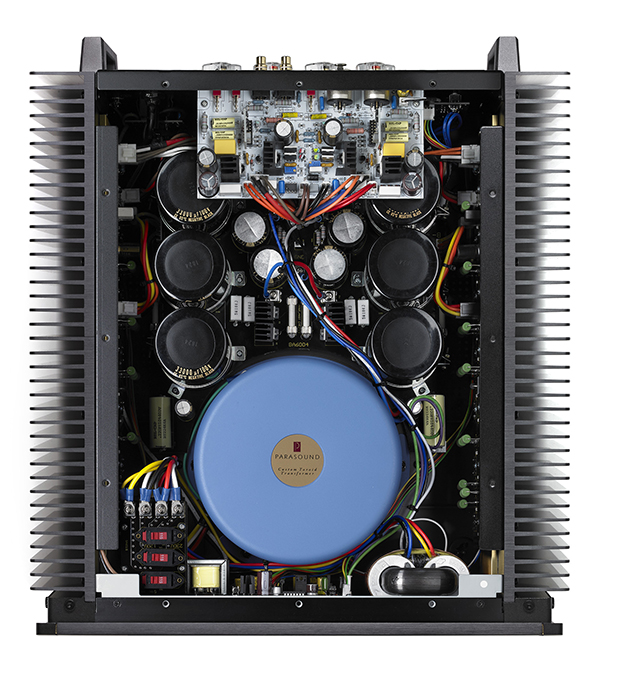
It’s probably going to be tough for most of you to hear the difference between 400 Watts per channel (8-ohms) and 450, but as you can see, the entire amplifier has been re-designed. Side by side they may look nearly identical, but it’s a completely different movie under the hood. Parasound also has a 4-page PDF called “the JC 1+ development story,” that you can access while looking at what’s changed. This is an impressive account of engineering excellence – legendary designer John Curl and the Parasound team didn’t just beef up a few capacitors and double the price.
Unbox and setup
The JC 1+ amplifiers are 83 pounds each, so if you need a buddy to unbox and place, make the proper arrangements so you don’t hurt your back or the amps. No one wants to dent a brand-new piece of gear, or go to the ER.
Once unpacked, the relatively slim form factor reveals a pair of amplifiers that are aesthetically pleasing, and also unobtrusive. Our review pair came in a lovely matte black finish, though silver is also available, matching all the rest of the Parasound lineup. A peek inside reveals a very tidy layout, careful assembly, and top-quality parts.
In addition to the outstanding sonics the JC 1+’s provide, they have to be the most versatile amplifiers we’ve ever used. Sporting high quality Neutrik XLR input (and loop-output) connectors, Vampire 24k gold-plated RCA connectors and dual CHK Infinium speaker binding posts, (great for bi-wiring, or subwoofers that use line-level outs) this amplifier feels the part. There is also a provision for changing the gain from 23dB to 29dB. This is very handy if you might just be using a vintage tube preamplifier, so that you can keep it in its sweet spot. We did this later in the review, with Jerold’s ARC SP-3 and my C-J PV-11, reliving the days when we both used a tube preamplifier for the warmth and a solid-state amplifier for the drive.
Once set up in the main reference system, where I normally use a pair of Pass Labs XA200.8 monoblocks, and a pair of Sonus faber Stradivari’s, the JC 1+’s have way more than enough power. The Strads have a sensitivity rating of 92dB/1-Watt, so they barely got out of the first 25 watts, that are all class-A. If you have similarly efficient speakers (the big Focal Stella and Grande Utopias are 94 and 96dB/1-watt) you may never get too far out of the class-A range.
It’s worth noting that there is a switch on the rear panel that lets you choose high or low bias. This nearly doubles the idle power draw from 145 watts to 275 watts. (Parasound claims approximately 400 watt draw at “normal listening levels.”) I walk 12 steps to work, so what the hell, I kept the bias cranked. This isn’t as big of a difference as switching a tube amp from Ultralinear to Triode mode, but I suspect this keeps the JC 1+ in class-A mode a little longer.
Because the reference speakers at my disposal are too efficient to even get close to running the JC 1+s out of power, it was not easy to tell if running two of them from a single 15A circuit would limit anything. Parasound says they require 1500 watts each for maximum power, so dedicated lines are probably in order. As my main amplifiers run from a pair of dedicated 20A lines, that’s how I ran the JC 1+’s for the entire review.
These amplifiers do not require a lengthy break in period. They sound great out of the box and within a couple days of being left on constantly, and being run for about 14 hours a day, the change between fresh out of the box and “broken in” is only a slight improvement. And, because they are not full blown class-A amplifiers, they don’t stay in the fog for the hour most of my favorite class-A solid-state amplifiers do. They sound pretty darn good at turn on, and sound their best at about 15 minutes. This is a real benefit to those of you that don’t always have hours and hours to listen!
Big amps, big sound
Awesome as that first 25 Watts in class-A is, these amplifiers are about effortless dynamics. That’s really what a ton of power is all about. These are amplifiers that make you want to play classical music, full symphony stuff that goes from pin-drop quiet to crescendos that rattle the roof. So I spent a lot more time listening to Mahler, Shostakovich, and Bax than I normally do.
Many audio enthusiasts forget that dynamics are really that fourth dimension, and even when you are listening to music that doesn’t seem to have massive dynamic swings, you are surprised when you have an amplifier that can deliver this kind of power. Chalk this up to an enormous power supply with a 2.1kVA transformer, 198,000uF filter capacitance, and the ability to deliver 180 peak amps of current. In each amplifier. Whether you’re listening to Mahler or Megadeth, when you really want to crank it up, the Parasounds will not let you down. Even when listening to some tracks way louder than was reasonable and prudent for way too long, (like my ears were ringing when I was done) these amplifiers are barely warm to the touch.
What’s really important here, and another facet of these upgraded amplifiers is the level of finesse that the + model offers over the originals. They both have more power than you’ll probably ever need, yet when you switch back to the original amps, it’s easier to hear the improvements that the current model brings. No disrespect to the original JC 1s, but they were great amps with a lot of power, but not quite amplifiers I’d connect to my favorite $50-$250k pair of speakers.
After using the JC 1+’s with both the Strads and the $150k/pair Focal Stella Utopia EMs, these amplifiers are worthy of any system you might want to place them in, regardless of cost. Parasound has built world-class amps for 18k. I’ve owned and reviewed a number of fantastic power amplifiers, and I could live happily ever after with these, with no regrets. As a matter of fact, I’m doing just that – the JC 1+’s are staying on as reference amplifiers. Over the past five years, there have been a couple of low-efficiency speakers where I’ve wished I’d had a little more power. The JC 1+s will fit that need perfectly.
Power is one thing, but resolution and low-level detail is another thing. Exciting as all of this power is, what separates the Parasound amplifiers from a number of high-powered amplifiers not costing as much as a new 3-series BMW is the level of resolution they offer. At high and low listening levels. More often than not, high powered solid-state amplifiers can play loud, but they can’t play soft, and it usually takes stepping up to something from Boulder, Pass, Vitus or a few other top contenders.
The JC 1+’s impress just as much when playing smaller scale music. Switching the program from full symphony and rock festival type music to string quartets, acoustic piano, and vocal heavy music is just as much of a treat. My fall back tracks are always Crowded House, Crosby, Stills, Nash & Young, and Todd Rundgren’s Utopia. I’m sure you have yours. When listening closely, anything with layered harmonies takes on a solid, three-dimensionality that pulls you into the music intimately, helping you to forget you’re listening to a hifi system.
Many of you are big fans of recent star Billie Eilish. She’s not my cup of, but there are some great bass grooves there, as well as some great atmospherics going on in her music. “All The Good Girls go to Hell” from her debut sounds flat and monodimensional on a mediocre system. Even at low levels, the powerful, grinding bass track will place a demand on your system. Yet with the Parasound amps, this is a big track. I’m a little fonder of Anja Garbarek’s Smiling and Waving. Check out “I Won’t Hurt You.” Garbarek has a softer, smoother, dreamier, less gritty voice than Eilish, and thanks to Steven Wilson having a hand in production, a bigger overall soundscape than the former.
Moving on to some equally spacey jazz from Nils Petter Molivaer’s 2001 release, Solid Ether gives up some Miles – esque horn riffs mixed with killer drum n’ bass beats. The JC 1+s again present this music with an enormous soundstage in all three dimensions, with the bass track cemented in place. Fun.
While we don’t live and die by specs here at TONE, it’s worth mentioning that the JC 1+’s have a damping factor of 1200 at 20hz. High damping factor and high current capability means deep bass with control. On many levels the JC 1+s remind me a lot of the Burmester 911’s I used to have in my reference system – except a pair of those will set you back $75k. See where I’m going with this?
We can’t not talk about tone
So often with these top – quality amplifiers, with so much power on tap, your final decision aside from cost might come down to tonality. Every amplifier sounds different. To try and put this in perspective, the Parasound amps remind me more of Boulder (totally neutral) and Burmester or Luxman’s new 900 series power amplifier – extremely neutral/natural with a bit more tonal saturation than “just the facts.” And I’m talking a few drops here. Where my reference Pass amps are a bit warmer in tonal scale, as are the top Luxman integrateds(the class-A ones), or the Vitus SIA-25 we just reviewed, with Bryston being a bit on the slightly cold side, and the Simaudio amps a few more clicks further in that direction.
What you will prefer is up to you, however the nice thing about an amplifier being this neutral to start, it allows you to perform final voicing to your taste with the rest of the components in your system. Again, I’m merely trying to put the Parasounds in perspective to the other things I’ve used or reviewed extensively – all of the aforementioned amplifiers are excellent. However, they all cost a lot more. The JC 1+ monos are fantastic amplifiers, that still engage after a full day’s listening.
Close as it gets to having and eating your cake
While we rarely if ever throw that big “b-word” around, the Parasound JC 1+ monoblocks are pretty damn incredible, ticking all the boxes for an incredibly reasonable price. In my travels, I’ve met a number of audiophiles that have to have the most expensive components money can buy, regardless of cost. These are the people you see with $500k to sky’s the limit systems. As Jerry Seinfeld used to say, “not like there’s anything wrong with that.”
However, I have met a number of music lovers that have experienced those systems, and while equally passionate, would love a system in the $100k – $200k range offering as much of the sonic benefits that these no holds barred systems render, but with more realistic budgets. If you are someone with this priority list, and want solid-state amplification, the JC 1+ monos should be at the top of your list. I have yet to hear a pair of solid-state amplifiers that offer anywhere near this much sonic excellence and sheer power for anywhere near the asking price of these amplifiers. Should you be on the way up in your audiophile journey, assembling a mega but sensibly priced system, these could also be your first major anchor as you build that system. With this much power on tap, you certainly won’t have any limits with your speaker choices.
Finally, one other aspect of these amplifiers that rarely gets mentioned in the context of a hifi review is long term value and durability. I’ve never seen a complaint about Parasound on the internet anywhere. In a world where all the internet pundits complain about everything on a regular basis, I looked for a few days to see if anyone had any kind of problems with Parasound, either in terms of disappointment with the purchase, to lack of support, or problems with repairs. For that matter, I couldn’t find a single horror story about a Parasound product croaking, anywhere. And I have my share of horror stories about a few brands that cost 2-5x what these amplifiers do, that took months (and in one instance years) to be repaired. Parasound’s stellar reputation for build quality should weigh heavily into your matrix when thinking about dropping this kind of cash.
These are fantastic amplifiers. That’s why they are staying, making them worthy of two of our awards, the #toneaudioapproved award, and our Exceptional Value Award.
I can’t suggest these highly enough.
The Parasound JC 1+ Monoblock Amplifiers
$17,998/pair
Peripherals
Digital Source dCS Vivaldi ONE
Analog Source AVID Volvere SP, Rega P10
Preamplifier Pass Labs XS Pre
Phono Pass Labs XS Phono, VAC Renaissance
Speakers Sonus faber 35th Anniversary Stradivari, Focal Stella Utopia EM
Cable Cardas Clear Beyond. (power, speaker, and interconnect)




